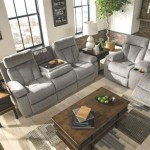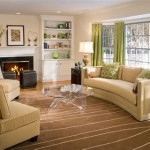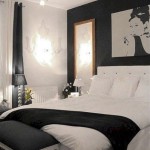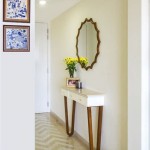How to Decorate Gray Rooms
Gray has become a staple in interior design, lauded for its versatility and sophistication. It transcends trends, offering a neutral backdrop that allows for a multitude of design possibilities. However, decorating with gray can sometimes feel challenging. Selecting the right shade, balancing cool and warm tones, and incorporating complementary elements are crucial for achieving a desired aesthetic. This article provides a comprehensive guide on how to effectively decorate gray rooms, ensuring a stylish and inviting atmosphere.
Understanding the Nuances of Gray
Gray is far from a monolithic color. It exists on a spectrum, ranging from light, almost-white shades to deep, charcoal hues. It possesses undertones that can significantly impact the overall look and feel of a space. Before embarking on any decorating project, it is essential to identify the specific undertones present in chosen gray paint or furniture.
Warm Grays: These grays possess hints of yellow, brown, or red. They create a comforting and inviting ambiance, well-suited for bedrooms and living rooms. When selecting warm grays, consider pairing them with complementary warm colors like beige, cream, or even muted oranges and reds. Natural wood furniture and brass accents further enhance the warmth.
Cool Grays: Cool grays lean towards blue, green, or violet. They evoke a sense of calmness and serenity, often used in bathrooms and minimalist spaces. These shades complement cool colors such as blues, greens, and purples. Silver or chrome accents enhance the cool, contemporary feel. It's important to note that in rooms with limited natural light, cool grays can sometimes appear cold or sterile. This can be mitigated by incorporating warm textures and strategic lighting.
Neutral Grays: These grays are the truest forms, lacking any distinct undertones. They act as a blank canvas, providing the most flexibility in terms of decorating. Neutral grays can be paired with a wide range of colors and styles, making them a safe and versatile choice.
To determine the undertone of a gray, compare it to a pure white surface in different lighting conditions. Holding paint swatches against existing furniture and fabrics can also reveal the underlying hues. Understanding these nuances is paramount for creating a cohesive and harmonious design scheme.
Balancing Light and Shadow
The amount of natural light a room receives plays a significant role in how gray paint appears. In rooms with ample natural light, darker shades of gray can work effectively, adding depth and drama without feeling overwhelming. Conversely, in rooms with limited natural light, lighter shades of gray are preferable, as they reflect light and brighten the space.
Artificial lighting is equally important. Layering different types of lighting – ambient, task, and accent – can create a more dynamic and inviting atmosphere. Warm-toned light bulbs can counteract the coolness of certain grays, while cool-toned bulbs can enhance the crispness of others.
Pay attention to the placement of lighting fixtures. Strategically positioned lamps can highlight architectural features or artwork, while recessed lighting can provide overall illumination. Dimmers are a valuable addition, allowing for adjustments in light intensity to suit different moods and activities. Reflective surfaces, such as mirrors and metallic accents, can also help to bounce light around the room and brighten dark corners.
The interplay of light and shadow is what ultimately brings a gray room to life. Careful consideration of both natural and artificial light sources is crucial for creating a balanced and visually appealing space.
Incorporating Color and Texture
While gray serves as a neutral backdrop, it is essential to introduce color and texture to prevent the room from feeling flat or monotonous. The strategic use of color can create focal points, add personality, and enhance the overall aesthetic.
Accent Colors: Selecting the right accent colors is key. For warm grays, consider warm-toned hues like mustard yellow, burnt orange, or deep reds. These colors create a harmonious and inviting feel. For cool grays, opt for cooler shades like teal, navy blue, or lavender. These colors enhance the sense of calm and tranquility. Pops of vibrant colors, such as fuchsia or turquoise, can also add a touch of energy and excitement.
Texture: Texture adds depth and visual interest to a gray room. Incorporate a variety of textures through furniture, fabrics, and accessories. Consider a plush velvet sofa, a woven rug, or linen curtains. Natural materials like wood, stone, and leather also add warmth and character. Don't underestimate the power of textured wall treatments, such as wallpaper or textured paint.
Accessories: Accessories provide opportunities to introduce both color and texture. Throw pillows, blankets, artwork, and decorative objects can add personality and style. Choose accessories that complement the overall design scheme and reflect personal tastes. Metallic accents, such as gold, silver, or copper, can also add a touch of glamour and sophistication.
Plants are an excellent way to introduce natural color and texture. Green foliage contrasts beautifully against gray backgrounds, adding life and vibrancy to the space. Consider a variety of plant sizes and types to create a visually interesting display.
Ultimately, successful decoration of a gray room involves a careful balance of color and texture. By strategically layering these elements, it is possible to create a space that is both stylish and inviting.
Considering Furniture and Flooring
The selection of furniture and flooring significantly impacts the overall look and feel of a gray room. The style, material, and color of these elements should complement the chosen shade of gray and the desired aesthetic.
Furniture Style: The furniture style should align with the overall design scheme. For a modern space, consider sleek, minimalist furniture with clean lines. For a more traditional space, opt for upholstered pieces with classic silhouettes. Mid-century modern furniture, characterized by its organic shapes and natural materials, works well with both warm and cool grays.
Furniture Material: The material of the furniture contributes to the overall texture and visual interest of the room. Leather furniture adds a touch of luxury and sophistication, while fabric-upholstered pieces offer comfort and warmth. Consider incorporating different materials to create a layered and dynamic look. For example, a leather sofa paired with wooden side tables and metal lamps can create a balanced and interesting composition.
Flooring Options: The choice of flooring can significantly impact the ambiance of a gray room. Hardwood floors add warmth and character, while tile or stone floors offer a more modern and sleek aesthetic. Light-colored wood floors can brighten a room and create a sense of spaciousness, while dark-colored wood floors add drama and sophistication. Area rugs can define spaces, add texture, and introduce color and pattern.
Furniture Color: When choosing furniture colors, consider the undertones of the gray walls. Warm grays complement warm-toned furniture, such as beige, cream, or brown. Cool grays pair well with cool-toned furniture, such as gray, blue, or green. Neutral furniture, such as white or black, can work with any shade of gray. Consider incorporating pops of color with accent chairs or throw pillows.
The key to successful furniture and flooring selection is to create a cohesive and harmonious design scheme. By carefully considering the style, material, and color of these elements, it is possible to create a gray room that is both stylish and functional.
Adding Personal Touches
While following design principles is important, a truly successful room reflects the personality and tastes of its occupants. Incorporating personal touches adds character and warmth, transforming a generic space into a home.
Artwork and Photography: Artwork and photography are excellent ways to add personality and style to a gray room. Choose pieces that resonate with personal interests and preferences. Consider the size, color, and style of the artwork to ensure it complements the overall design scheme. Hang artwork at eye level to create a visually balanced display.
Collectibles and Memorabilia: Displaying collectibles and memorabilia adds a personal touch and sparks conversation. Arrange these items on shelves, tables, or mantels to create a curated and interesting display. Consider grouping items by color, shape, or theme to create a cohesive look.
Books and Magazines: Books and magazines add a sense of intellectual curiosity and visual interest. Arrange them on bookshelves, coffee tables, or side tables. Consider displaying books with interesting covers or spines to add color and texture.
Personal Projects: Displaying personal projects, such as handmade crafts, DIY projects, or travel souvenirs, adds a unique and meaningful touch. These items tell a story and reflect personal passions and interests.
The key to adding personal touches is to curate a collection of items that are meaningful and reflect personal style. Avoid clutter and strive for a balanced and visually appealing display. By incorporating personal touches, it is possible to transform a gray room into a warm, inviting, and truly unique space.
:strip_icc()/White-sand-design-gray-bedroom-28fff6fdda8f410b900fc84bad08d51a.jpeg?strip=all)
11 Beautiful Gray Room Design Ideas
:strip_icc()/ScreenShot2020-11-18at2.45.29PM-df553f684f5146e88435f1c795f36820.png?strip=all)
30 Ways To Decorate With Gray In The Bedroom

The Best Grey Bedroom Decor Ideas

Gray Bedroom Ideas That Are Anything But Dull Architectural Digest

35 Best Gray Living Room Ideas How To Use Paint And Decor In Rooms

37 Best Grey Bedroom Ideas Beautiful Decor And Designs 2025 Guide Design Interior

Polished Passion 19 Dashing Bedrooms In Red And Gray Decoist

35 Stylish Gray Rooms Decorating With

12 Grey Bedroom Ideas For A Neutral Classic Vibe Decor Black Inspiration

Painting And Decorating Is Grey Dead Expert Advice
Related Posts







